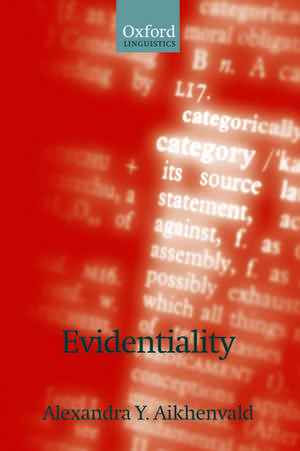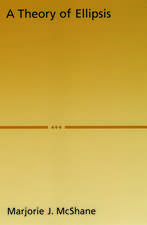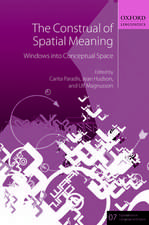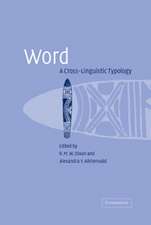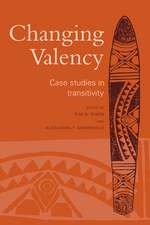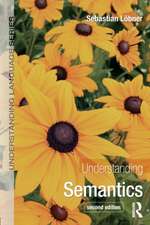Evidentiality
Autor Alexandra Y. Aikhenvalden Limba Engleză Paperback – iun 2006
| Toate formatele și edițiile | Preț | Express |
|---|---|---|
| Paperback (1) | 404.62 lei 32-37 zile | |
| OUP OXFORD – iun 2006 | 404.62 lei 32-37 zile | |
| Hardback (1) | 1115.92 lei 32-37 zile | |
| OUP OXFORD – 4 noi 2004 | 1115.92 lei 32-37 zile |
Preț: 404.62 lei
Preț vechi: 512.73 lei
-21% Nou
Puncte Express: 607
Preț estimativ în valută:
77.42€ • 80.68$ • 64.11£
77.42€ • 80.68$ • 64.11£
Carte tipărită la comandă
Livrare economică 24-29 martie
Preluare comenzi: 021 569.72.76
Specificații
ISBN-13: 9780199204335
ISBN-10: 0199204330
Pagini: 480
Ilustrații: One map, numerous tables
Dimensiuni: 157 x 234 x 27 mm
Greutate: 0.69 kg
Ediția:Revised
Editura: OUP OXFORD
Colecția OUP Oxford
Locul publicării:Oxford, United Kingdom
ISBN-10: 0199204330
Pagini: 480
Ilustrații: One map, numerous tables
Dimensiuni: 157 x 234 x 27 mm
Greutate: 0.69 kg
Ediția:Revised
Editura: OUP OXFORD
Colecția OUP Oxford
Locul publicării:Oxford, United Kingdom
Recenzii
...marks a major advance in the study of evidentiality ... Aikenvald has opened the floor for discussion, and everyone with an interest in this area can only appreciate this.
...a truly superb example of a cross-linguistic survey of a grammatical category... This book belongs in every linguistics library.
The most important current resource for anyone interested in the nature and typology of evidentials.
...a truly superb example of a cross-linguistic survey of a grammatical category... This book belongs in every linguistics library.
The most important current resource for anyone interested in the nature and typology of evidentials.
Notă biografică
Alexandra Y. Aikhenvald is Professor and Associate Director of the Research Centre for Linguistic Typology at La Trobe University. She has worked on descriptive and historical aspects of Berber languages and has published, in Russian, a grammar of Modern Hebrew (1990). She is a major authority on languages of the Arawak family, from northern Amazonia, and has written grammars of Bare (1995, based on work with the last speaker who has since died) and Warekena (1998), plus A Grammar of Tariana, from Northwest Amazonia (Cambridge University Press 2003), in addition to essays on various typological and areal features of South American languages. Her books, Classifiers: a typology of noun categorization devices (2000, paperback reissue 2003), and Language Contact in Amazonia (2002) were published by Oxford University Press. She is currently working on a reference grammar of Manambu, from the Sepik area of New Guinea.
